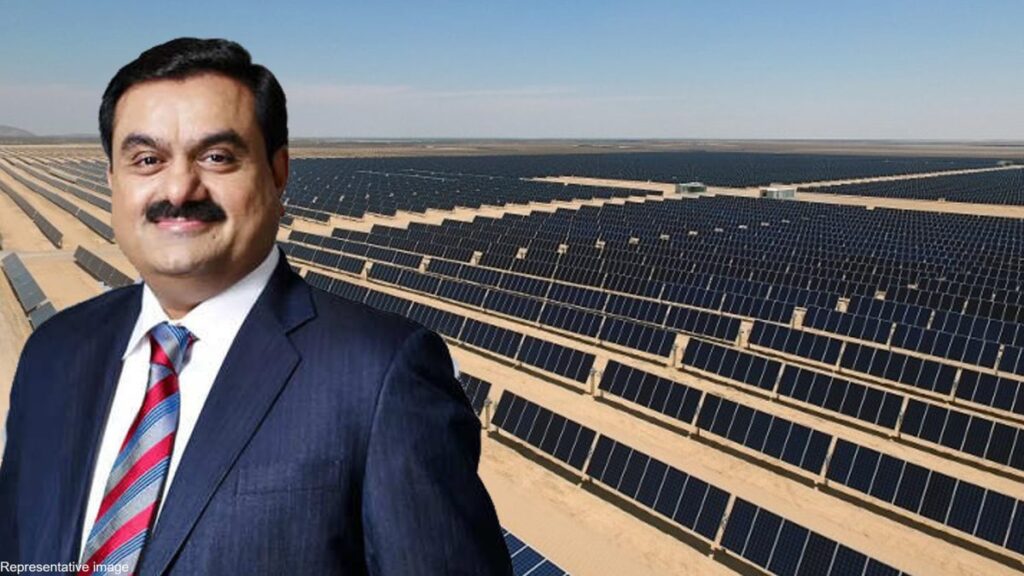
India’s clean energy revolution is getting a major push with Adani Group’s latest announcement—a ₹20,000 crore green hydrogen and solar energy investment to be deployed over the next three years. The conglomerate led by Gautam Adani continues to shift gears from traditional fossil fuel ventures to building one of the world’s largest green energy ecosystems.
With this bold investment, Adani aims to position India as a global leader in renewable energy and green hydrogen exports, in line with the government’s goal of achieving net-zero emissions by 2070.
🔍 Key Announcement Highlights
- Investment Size: ₹20,000 crore (~$2.4 billion)
- Focus Areas: Green hydrogen, solar module manufacturing, wind power, battery storage
- Location: Gujarat, Rajasthan, Tamil Nadu
- Timeline: Projects to begin operations between 2026 and 2028
- Jobs Created: Over 15,000 direct and indirect jobs
This marks one of India’s largest private green energy commitments in recent years and is expected to have a ripple effect across allied sectors.
🌱 What is Green Hydrogen and Why It Matters
Green hydrogen is produced using renewable energy sources like solar or wind, with zero carbon emissions. It’s seen as the future fuel for:
- Heavy industries (steel, cement, chemicals)
- Long-distance transport (trucks, ships)
- Power storage and grid balancing
Unlike “grey hydrogen” (made from fossil fuels), green hydrogen is clean, making it a cornerstone of India’s energy independence and climate strategy.
🌐 Adani’s Renewable Energy Ambitions
The group already has:
- 20+ GW of renewable energy capacity under development
- World’s largest solar power plant (Kutch, Gujarat)
- Plans to become world’s largest renewable energy company by 2030
With this new investment, Adani aims to:
- Build gigawatt-scale electrolyzer factories
- Set up export hubs for hydrogen-based fuels
- Integrate battery storage units with grid-scale solar farms
📈 Impact on Indian Economy & Energy Sector
✅ 1. Boost to “Make in India”
The initiative supports domestic manufacturing of:
- Solar modules
- Wind turbines
- Electrolyzers
- Battery packs
This reduces reliance on Chinese imports and strengthens India’s green tech industry.
✅ 2. Lower Carbon Footprint
India is the third-largest carbon emitter globally. Replacing coal and diesel with hydrogen can drastically cut emissions, especially in sectors where electric solutions are not feasible.
✅ 3. Green Job Creation
The renewable energy push is expected to create jobs in:
- Solar and wind installation
- Battery assembly
- Logistics and operations
- Hydrogen plant maintenance
Over 1 million green jobs are expected to be created in India by 2030.
✅ 4. Export Potential
India could export green ammonia, methanol, and hydrogen to energy-starved regions like Europe and Japan, generating billions in foreign exchange.
📣 Government Support & Policy Alignment
The Indian government has already launched:
- National Green Hydrogen Mission with ₹19,744 crore outlay
- PLI Schemes for solar, battery, and green hydrogen equipment
- Tax incentives and land allocation for clean energy parks
Adani’s announcement comes as a vote of confidence in these policies and accelerates India’s private-public partnership model for green growth.
💬 Market Reactions
- Adani Green Energy Ltd (AGEL) stock surged 4.2% post-announcement
- Brokerages like Motilal Oswal and Jefferies upgraded AGEL to “Buy”
- Renewable energy ETFs saw increased investor interest
“This investment shows that India can lead the world in green hydrogen if backed by long-term vision and scale.”
— Dr. Ajay Mathur, CEO, International Solar Alliance
“Adani’s green shift is not just strategic—it’s necessary. The world is watching India now.”
— Rachna Chowdhary, Energy Policy Analyst
⚠️ Challenges to Watch
While this announcement is promising, several challenges remain:
- Storage & Transport of hydrogen is costly and complex
- Electrolyzer technology is still expensive
- Infrastructure and safety regulations need urgent upgrades
- Global competition is fierce—from Saudi Arabia to Australia
Adani’s deep capital base and government coordination will be crucial to overcoming these barriers.
🧭 Final Thoughts
The Adani Group’s green energy pivot is not just a business expansion—it’s a national milestone. It shows that India’s industrial giants are aligning with sustainable goals, helping the country move from an energy importer to a clean energy exporter.
If executed successfully, this initiative can:
- Reduce India’s energy import bill
- Fight climate change
- Create millions of jobs
- Make India the hub for green innovation and manufacturing

